Photos: More than 40 Tombs Discovered in Upper Egypt
Excavated Tomb
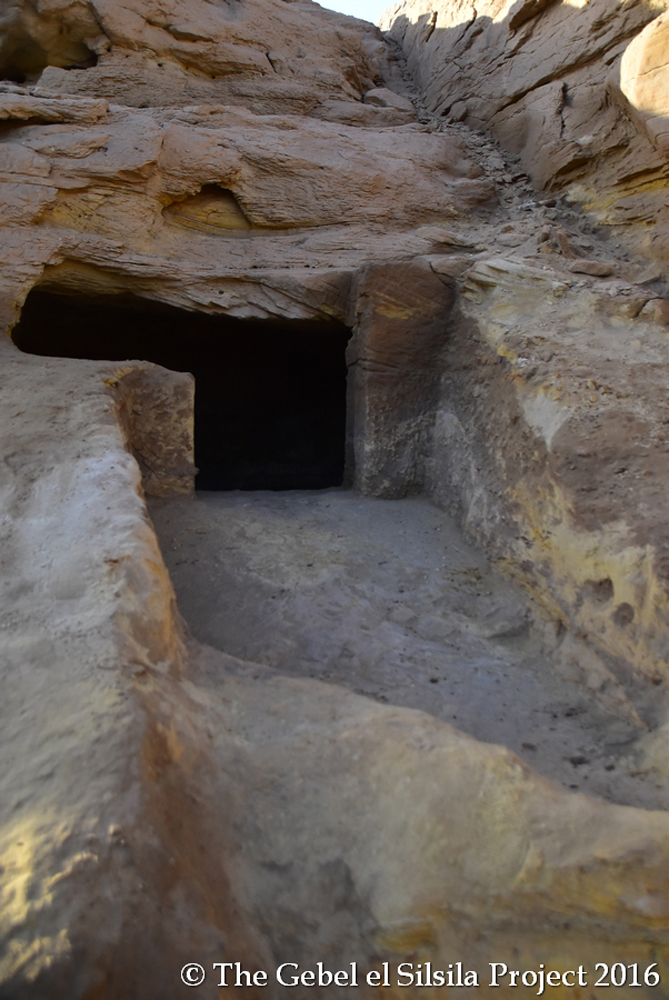
A newly excavated 18th or 19th Dynasty tomb at Gebel el Silsila in Upper Egypt. This tomb was buried, inside and out, in Nile silt from flooding. Archaeologists with the Gebel el Silsila Project suspected this silt was contributing to ongoing water erosion from the river by sucking water closer to the sandstone like a sponge. In spring 2016, the team cleared three of these rock-hewn openings out and discovered them to be looted tombs (though some still contained jumbled human bones). There are a total of 42 newly documented tombs in the necropolis, plus one shrine.
Empty Crypt
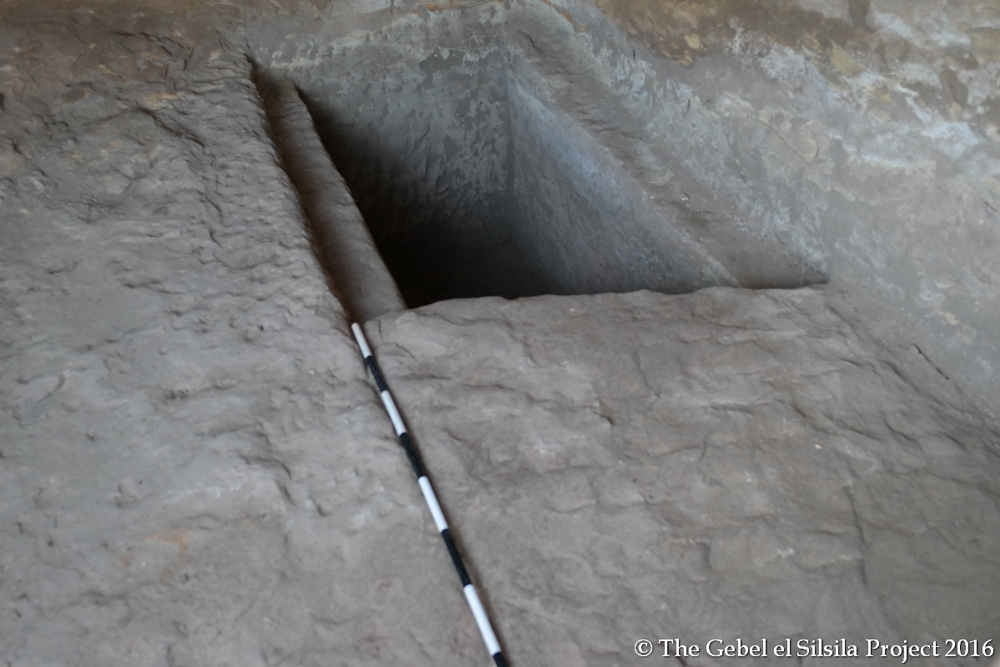
A crypt was cut into the floor of "Tomb 15" at Silsila. Half of the lid remains, but the other half — and any remains that once rested beneath — is gone. Archaeologists discovered pottery, including intact beer jugs and offering bowls, in the silty debris filling these tombs. The presence of the necropolis, where men, women and children were buried, suggests that Silsila was home to a bustling settlement, not just a rock quarry as once thought. But the location of this mysterious settlement remains unknown.
Two-roomed Tomb
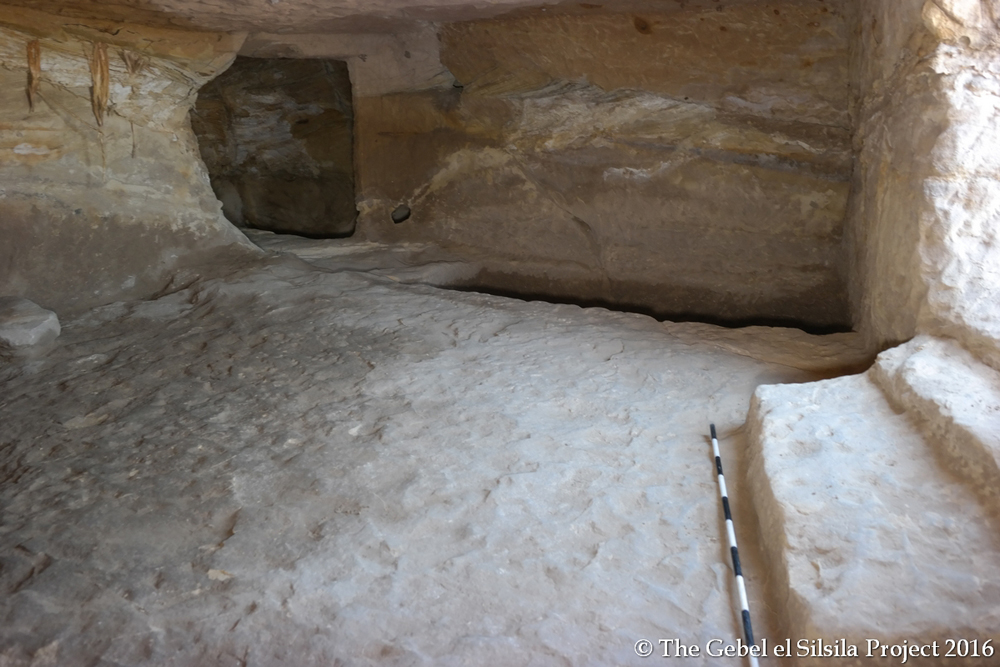
The interior of Tomb 14, one of three cleared of silt by the Gebel el Silsila Project in spring 2016. An opening to the side is the entrance to a second chamber in this two-roomed tomb.
Into the light
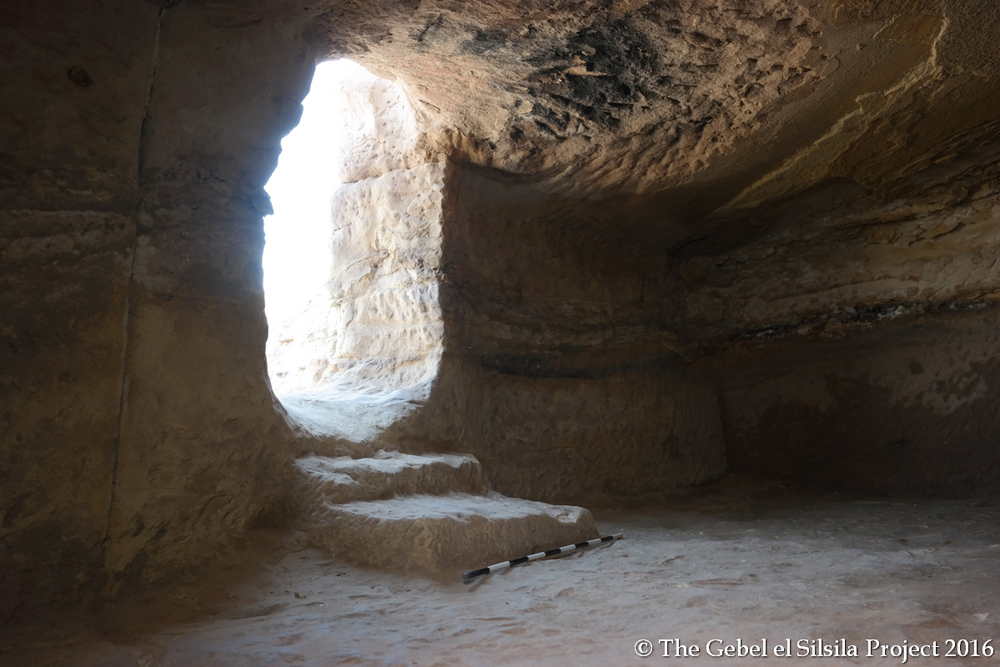
A view from inside Tomb 14, looking out at the tomb entrance. These tombs were roughly cut from the rock, and Nile flooding has damaged them. Pottery and artifacts found at the site date these tombs to the 18th or 19th Dynasty, meaning they were built between about 1543 B.C. to about 1189 B.C.
Entering the tomb
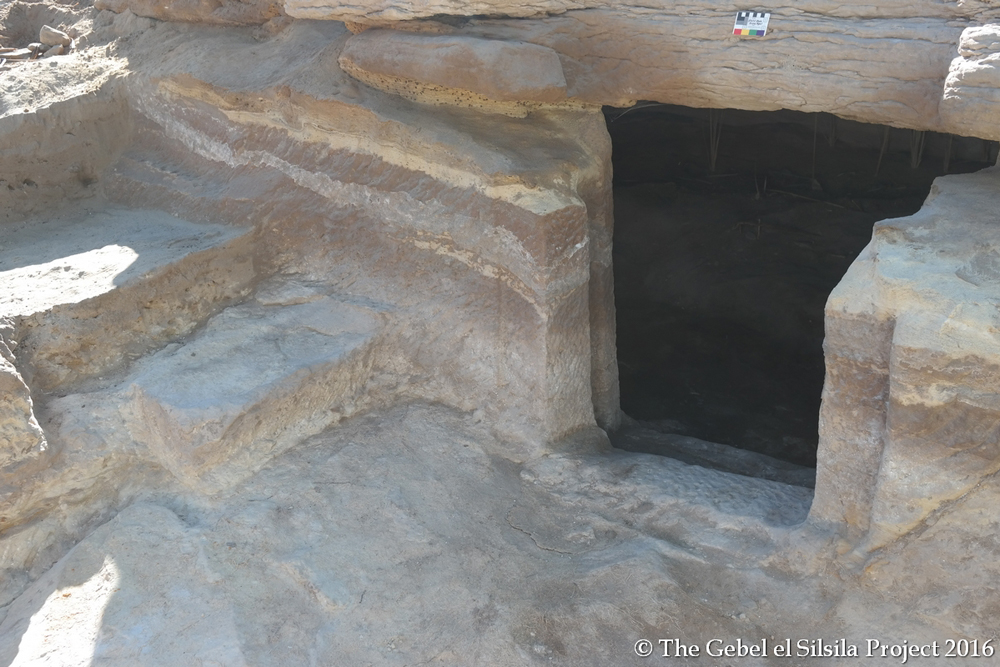
Tomb 2, one of three cleared by the Gebel el Silsila Project in spring 2016. Project archaeologists have identified 42 tombs and a shrine at the site. The three cleared tombs were filled with silt and debris: beads, bones, pottery and even bits of crocodile armor, perhaps washed in by the Nile. Preliminary analysis suggests that the bones belonged to men, women and children, suggesting permanent habitation at Silsila, the researchers wrote in a blog post about the finds.
Royal amulet
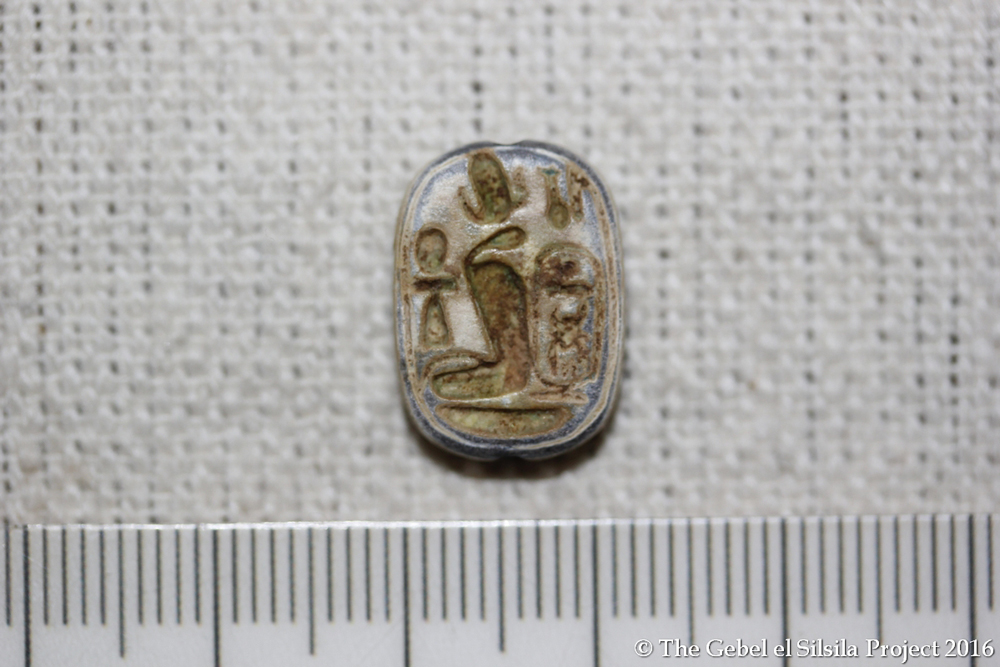
This seal, found during the tomb excavations, bears the name of Thutmose III, who reigned from about 1479 B.C. to 1425 B.C. in the 18th Dynasty. Famously, Thutmose III began his reign as co-regent with Hatshepshut, the first female pharaoh. The presence of this seal at Silsila suggests an elite burial, indicating that the people in the necropolis were not only lowly quarry workers.
Pharaoh's scarab
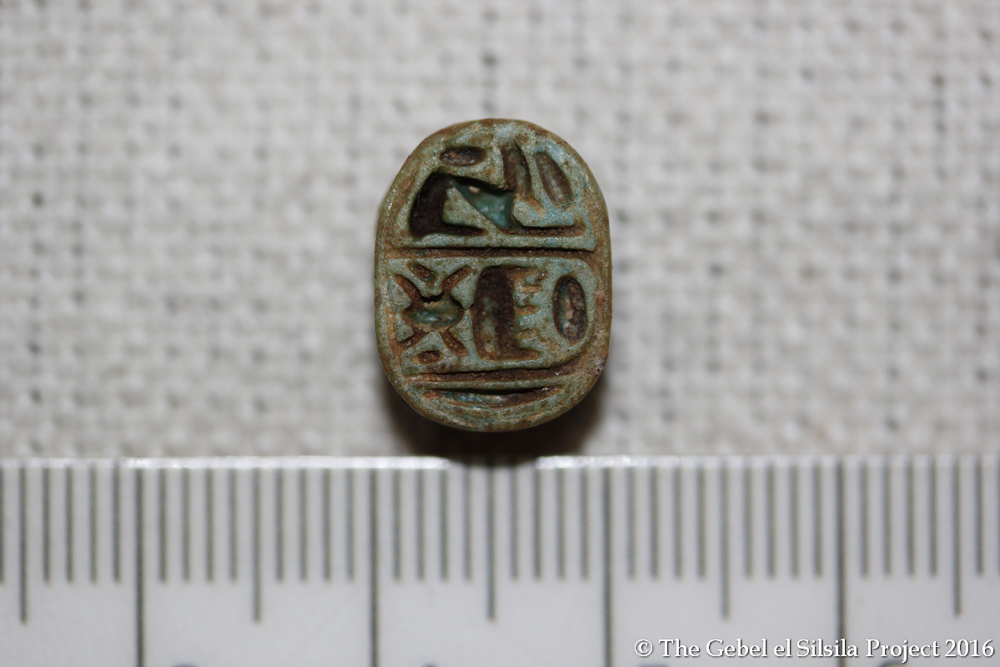
A scarab bearing the cartouche of the pharaoh Thutmose III, the sixth pharaoh of Egypt's 18th Dynasty. The discovery of this amulet at Silsila suggests the presence of elites in the area, hinting at a more permanent occupation than previously believed for the quarry site. Silsila also boasted a temple and slab-like monuments called stellae alongside its necropolis, but archaeologists have yet to find the settlement that would have housed the people building and using these ceremonial sites.
Sign up for the Live Science daily newsletter now
Get the world’s most fascinating discoveries delivered straight to your inbox.
Portcullis
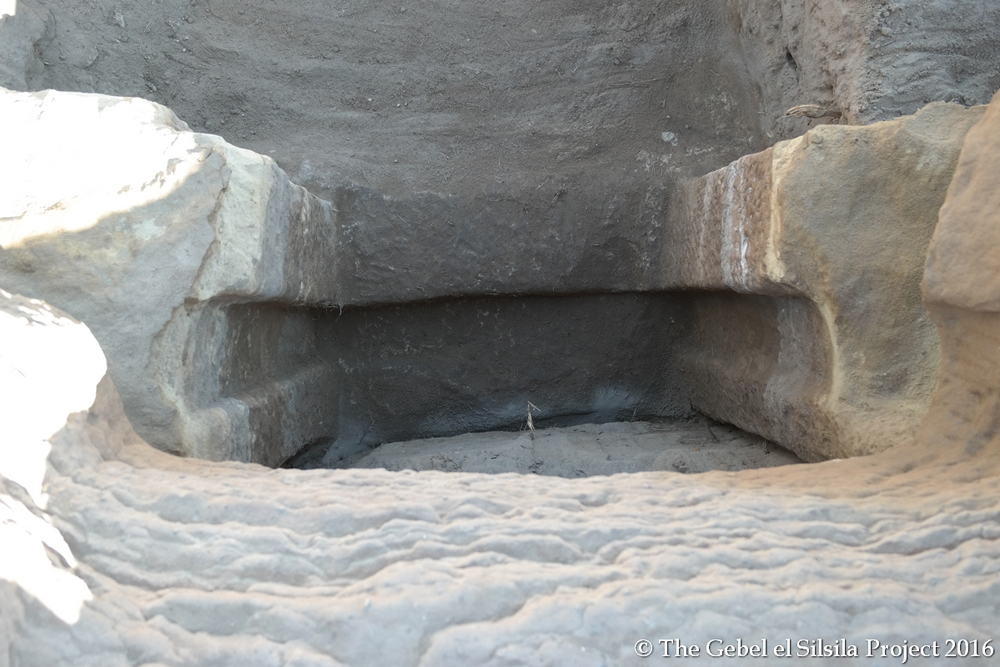
Each excavated tomb at Silsila had notches carved in its doorway that would have held a sliding portcullis. These were family tombs, John Ward, assistant director of the Gebel el Silsila Survey Project, told Live Science. They would have been reopened for new burials periodically.
Family Crypt
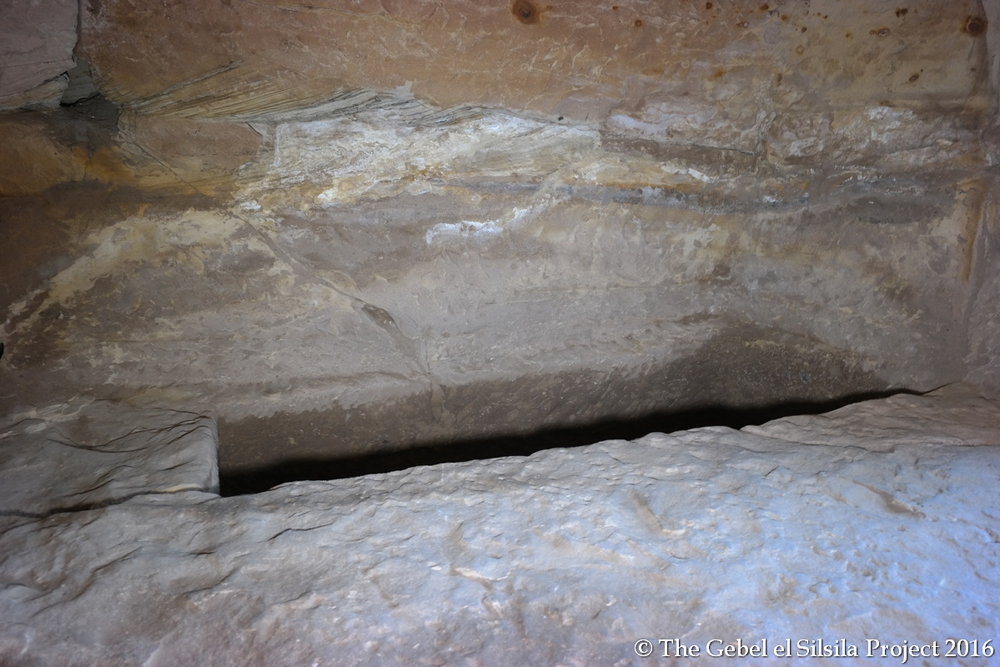
One of the crypts carved into the floor of Tomb 14. These tombs lack interior decoration or complete human remains, so archaeologists aren't yet certain who was buried in them. The team plans to clear more of the Silsila tombs of silt and hopes to find skeletal remains or markings that will offer more clues. But the tombs appear to have been looted in antiquity, and have been damaged by Nile floodwaters.
Nile, Nile Crocodile
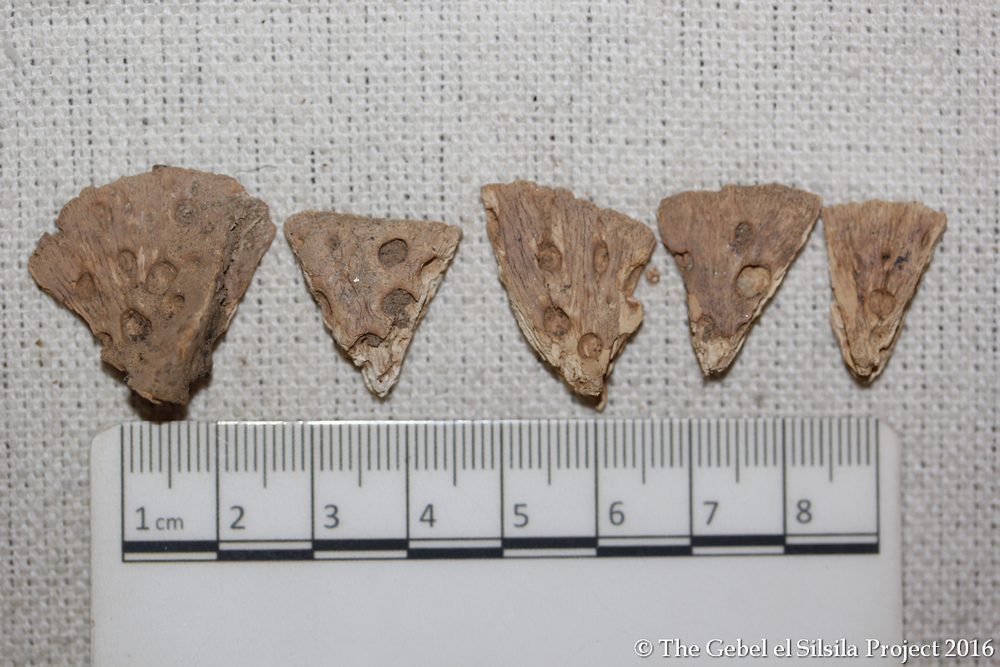
Among the Nile debris in the tombs were these crocodile scutes. These are bits of the armored back of the Nile's famous, predatory reptiles. These scutes may have come from a crocodile that made it into the tombs to scavange, or they might simply have been washed in by Nile floodwaters, Ward said.
Lone Bone
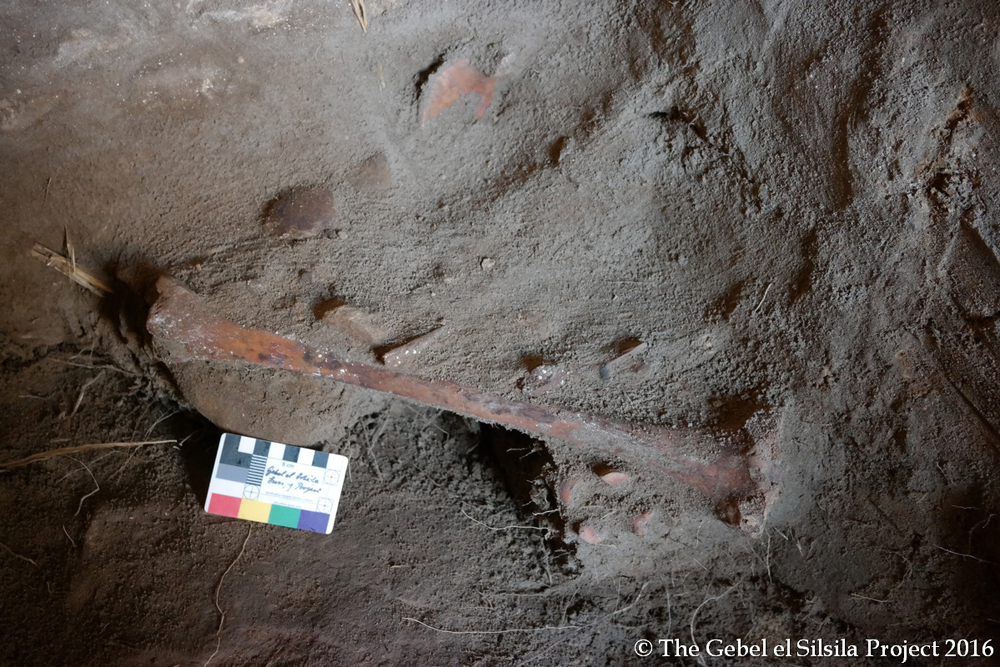
A lone bone fragment mixed in with Nile silt and debris in Tomb 2 at Silsila. Preliminary analysis of bones found at the site suggest that men, women and children were all buried in the tombs, but their remains are fragmented and scrambled. Researchers hope to stumble upon an intact tomb or one with surviving decoration. If they can find a family name, they might be able to link the people in Silsila to ancient Egyptians known from texts and necropolises in other cities, Ward said.

Stephanie Pappas is a contributing writer for Live Science, covering topics ranging from geoscience to archaeology to the human brain and behavior. She was previously a senior writer for Live Science but is now a freelancer based in Denver, Colorado, and regularly contributes to Scientific American and The Monitor, the monthly magazine of the American Psychological Association. Stephanie received a bachelor's degree in psychology from the University of South Carolina and a graduate certificate in science communication from the University of California, Santa Cruz.









